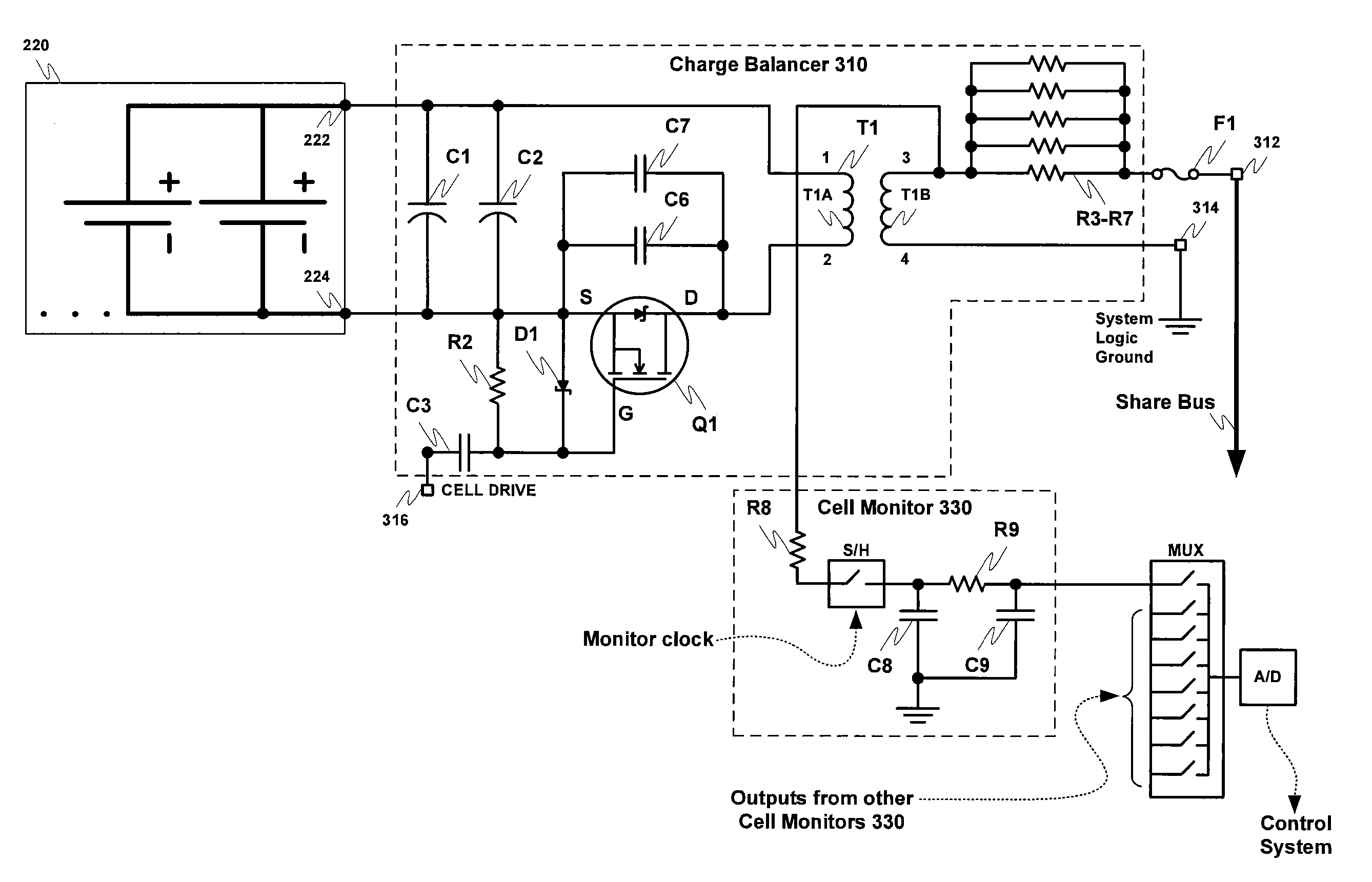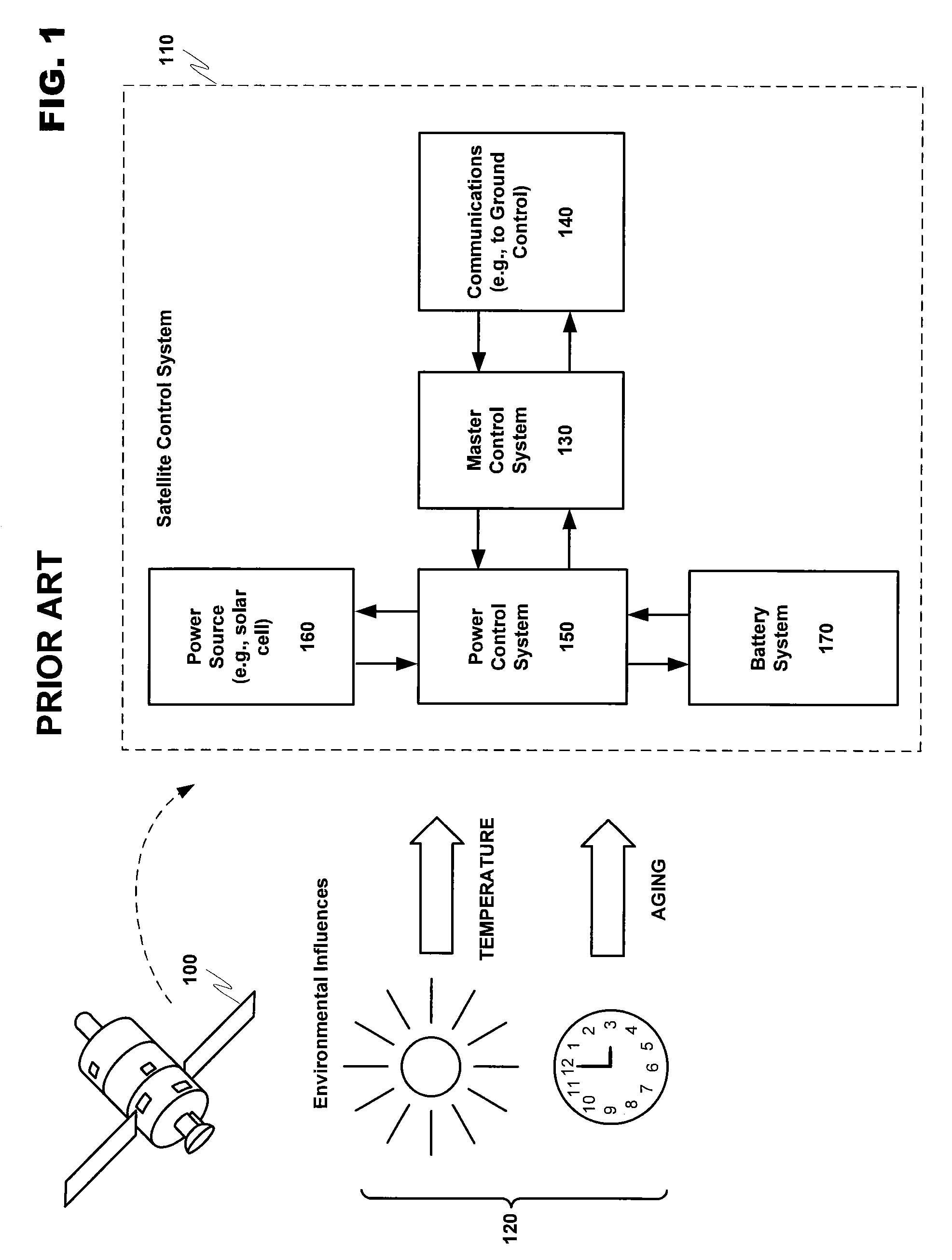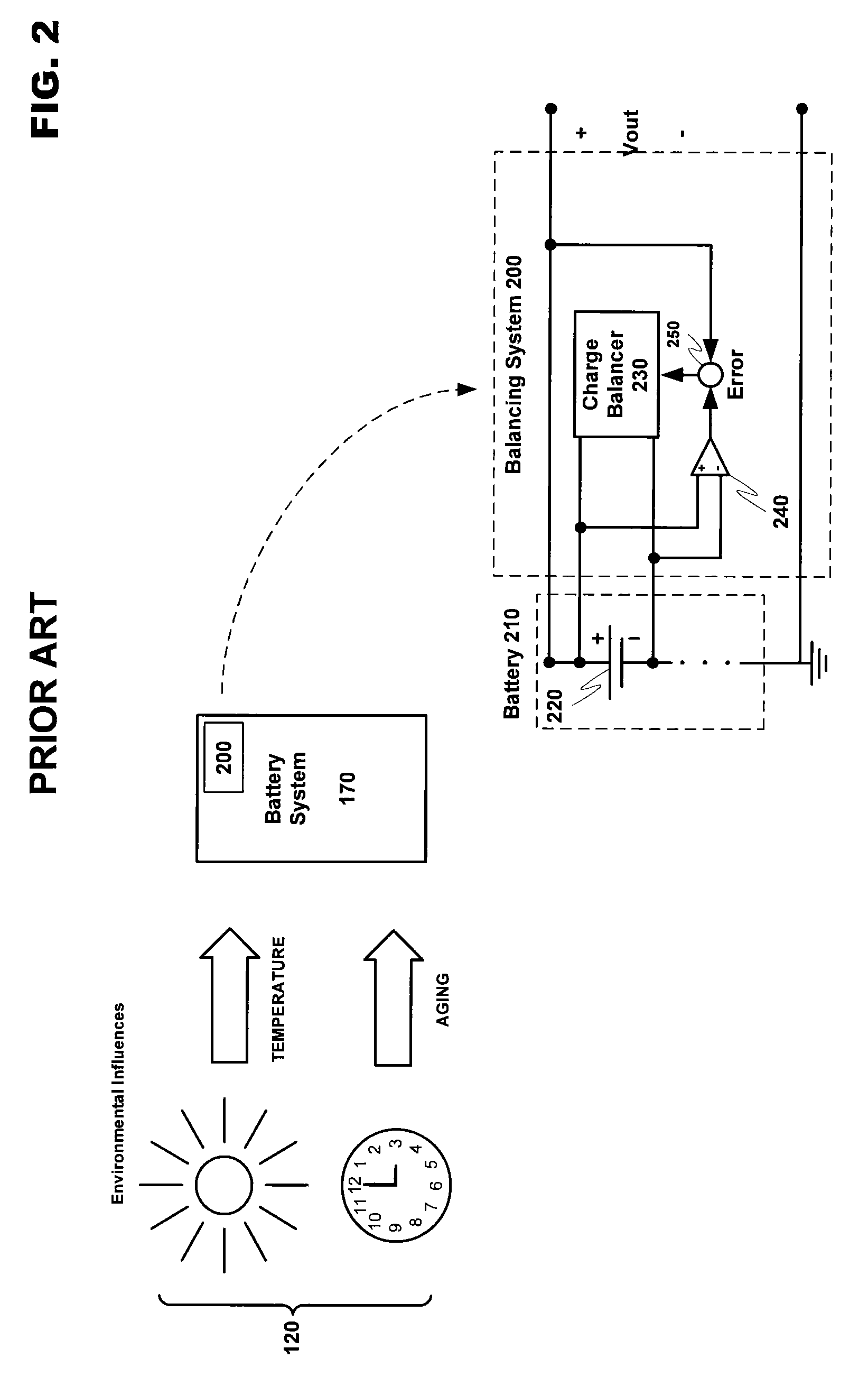Compensation for parasitic resistance in battery monitoring
a battery monitoring and parasitic resistance technology, applied in the field of battery balancing system compensation for parasitic resistance, can solve the problems of unbalanced individual cells of some types of batteries, for example lithium ion batteries, over continuous use, and lessen the overall lifespan of the battery, so as to ensure the optimal performance of balancing stored battery energy and balance energy level
Active Publication Date: 2008-01-24
COBHAM ADVANCED ELECTRONICS SOLUTIONS
View PDF5 Cites 13 Cited by
- Summary
- Abstract
- Description
- Claims
- Application Information
AI Technical Summary
Benefits of technology
[0009] The battery balancing circuits may conduct current to and from the batteries in order to achieve a balanced energy level between the batteries. The battery balancing circuits, which may be composed at least in part of a forward converter with a resonant fly-back reset circuit, are driven by a battery balancing drive clock. The clock frequency drives the various components of the balancing circuit in a stepwise fashion to allow the charging and discharging of the various components in order to provide the balancing effect.
[0010] The aforementioned battery balancing circuits may all be coupled to a common bus, or “share bus,” that allows the PLL-based controller to receive a combined resonant signal from the battery balancing circuits. The controller may then measure the combined fly-back time of the balancing circuits in order to determine an appropriate operating frequency for the battery balancing drive clock, which is supplied back to each battery balancing circuit. In this manner, the balancing circuits may be driven at a frequency that matches their current resonant frequency, helping to assure optimum performance in the balancing of stored battery energy.
Problems solved by technology
Power spikes or losses often risk an unrecoverable loss of system control, resulting in damage to equipment or possibly life-threatening situations.
The individual cells of some types of batteries, for example Lithium Ion batteries, may become unbalanced over continuous use.
While these batteries may continue to function, the cell unbalancing may cause performance problems and lessen the overall lifespan of the battery.
Problems may occur, however, as state of the art battery balancing systems age.
Analog components employed in the circuits that monitor and redistribute energy amongst the individual battery cells may experience changes in their overall response time due to age, temperature fluctuations, electromagnetic damage, etc.
As a result, the “evolving” resonant frequency of the circuit no longer matches the original frequency as the circuit is used, and the overall performance of the circuit declines.
The system may further experience disturbances due to non-ideal component behavior intrinsic to the circuit itself.
These disturbances may include parasitic resistance that adversely affects the accuracy of cell voltages monitored by a microprocessor coupled to the balancing system, which may in turn impact overall system performance.
More specifically, inaccurate measured voltages may result in incorrect control execution, false alarms and possibly even damage to the system.
Method used
the structure of the environmentally friendly knitted fabric provided by the present invention; figure 2 Flow chart of the yarn wrapping machine for environmentally friendly knitted fabrics and storage devices; image 3 Is the parameter map of the yarn covering machine
View moreImage
Smart Image Click on the blue labels to locate them in the text.
Smart ImageViewing Examples
Examples
Experimental program
Comparison scheme
Effect test
case 1
[0064] (series 4) 14 bits was used for the fraction, total word size 23 bits
case 2
[0065] (series 3) 15 bits was used for the fraction, total word size 24 bits
case 3
[0066] (series 2) 17 bits was used for the fraction, total word size 26 bits
the structure of the environmentally friendly knitted fabric provided by the present invention; figure 2 Flow chart of the yarn wrapping machine for environmentally friendly knitted fabrics and storage devices; image 3 Is the parameter map of the yarn covering machine
Login to View More PUM
 Login to View More
Login to View More Abstract
A system for balancing charge between a plurality of storage battery cells within a storage battery. The battery balancing system may sense changes, possibly caused by environmental influences, in the overall resonant frequency of charge balancing circuits contained within the battery balancing system and compensate for the change in resonant frequency. Further, the system may correct battery cell voltages monitored by a controller that may include errors due to intrinsic circuit problems, such as parasitic voltage, to reflect an actual voltage of a battery cell.
Description
RELATED APPLICATIONS [0001] This application is a continuation-in-part of U.S. application Ser. No. 11 / 443,151, filed May 31, 2006, entitled “BATTERY BALANCING INCLUDING RESONANT FREQUENCY COMPENSATION,” by the same inventive entity of the instant non-provisional application, all of which is herein incorporated by reference.BACKGROUND OF THE INVENTION [0002] The present invention relates to a device and method for balancing charge between a plurality of storage batteries, and more specifically, to a battery balancing system that compensates for changes in the resonant frequency of charge balancing circuits in order to maintain optimal system performance and to deliver accurate measured characteristics. DESCRIPTION OF PRIOR ART [0003] Electronic monitoring and control applications require continuously supplied power from one or more reliable sources. These sources may generate power (e.g., solar cells, fossil fuel engines, hydroelectric, etc.) or may provide stored power when generat...
Claims
the structure of the environmentally friendly knitted fabric provided by the present invention; figure 2 Flow chart of the yarn wrapping machine for environmentally friendly knitted fabrics and storage devices; image 3 Is the parameter map of the yarn covering machine
Login to View More Application Information
Patent Timeline
 Login to View More
Login to View More Patent Type & Authority Applications(United States)
IPC IPC(8): H02J7/00
CPCH02J7/0016H02J7/0018G01R31/396G01R31/3835H02J7/0014H02J7/0048
Inventor ALTEMOSE, GEORGE
Owner COBHAM ADVANCED ELECTRONICS SOLUTIONS
Features
- R&D
- Intellectual Property
- Life Sciences
- Materials
- Tech Scout
Why Patsnap Eureka
- Unparalleled Data Quality
- Higher Quality Content
- 60% Fewer Hallucinations
Social media
Patsnap Eureka Blog
Learn More Browse by: Latest US Patents, China's latest patents, Technical Efficacy Thesaurus, Application Domain, Technology Topic, Popular Technical Reports.
© 2025 PatSnap. All rights reserved.Legal|Privacy policy|Modern Slavery Act Transparency Statement|Sitemap|About US| Contact US: help@patsnap.com



